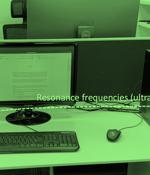Security News

A novel data exfiltration technique has been found to leverage a covert ultrasonic channel to leak sensitive information from isolated, air-gapped computers to a nearby smartphone that doesn't even require a microphone to pick up the sound waves. "Our malware generates ultrasonic tones in the resonance frequencies of the MEMS gyroscope," Dr. Guri said in a new paper published this week.

People can generally hear audio frequencies ranging from 20 Hz and 20,000 Hz, though individual hearing ranges vary. Samuel Weiler, a web security engineer with MIT CSAIL and a member of the W3C's Privacy Interest Group, recently pushed to re-open a discussion about limiting the Web Audio API so that it cannot be used to generate or listen for ultrasonic signals without permission.

I previously wrote about hacking voice assistants with lasers. Voice assistants - the demo targeted Siri, Google Assistant, and Bixby - are designed to respond when they detect the owner's voice after noticing a trigger phrase such as 'Ok, Google'.

Researchers have discovered a new means to target voice-controlled devices by propagating ultrasonic waves through solid materials in order to interact with and compromise them using inaudible voice commands without the victims' knowledge. It's possible for an attacker to interact with the devices using the voice assistants, hijack SMS two-factor authentication codes, and even place fraudulent calls, the researchers outlined in the paper, thus controlling the victim device inconspicuously.

Dubbed SurfingAttack by a US-Chinese university team, this is no parlor trick and is based on the ability to remotely control voice assistants using inaudible ultrasonic waves. Voice assistants - the demo targeted Siri, Google Assistant, and Bixby - are designed to respond when they detect the owner's voice after noticing a trigger phrase such as 'Ok, Google'.

Voice commands encoded in ultrasonic waves can, best case scenario, silently activate a phone's digital assistant, and order it to do stuff like read out text messages and make phone calls, we're told. In the video demo below, a handset placed on a table wakes up after the voice assistant is activated by inaudible ultrasonic waves.

Playing a sound over the speakers can cause computers to crash and possibly even physically damage the hard drive. Academic paper....

Researchers have demonstrated how sonic and ultrasonic signals (inaudible to human) can be used to cause physical damage to hard drives just by playing ultrasonic sounds through a target...

Another group of researchers has demonstrated that hard disk drives (HDDs) can be interfered with through sound waves, but they’ve also shown that ultrasonic signals (i.e., sounds inaudible to the...

I've previously written about ad networks using ultrasonic communications to jump from one device to another. The idea is for devices like televisions to play ultrasonic codes in advertisements...